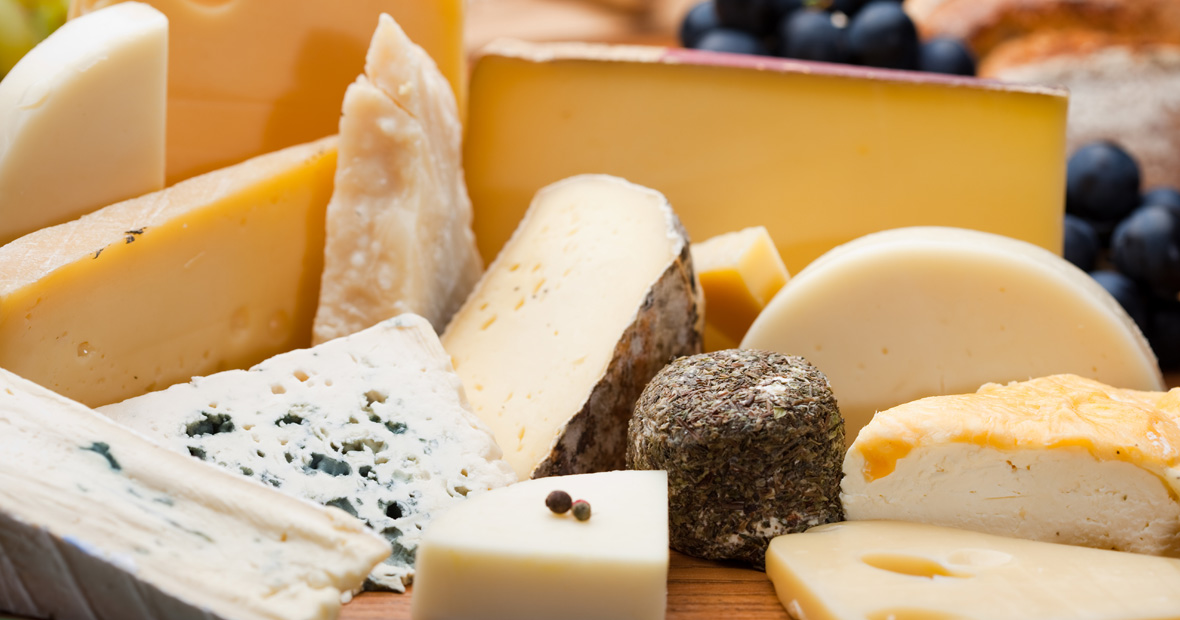
The human race has many differences, but it shares one trait: everyone loves cheese. From ancient times cheese has been a beloved comfort food and an essential culinary ingredient. Recent studies have found cheese to be a superfood and very beneficial, proving why people need to eat more cheese. There are numerous varieties of cheese from around the world and it’s impossible to get all of them. They differ in fat content, spices, smell, texture and processing. Though many types of cheese are available for cheese subscription to cheese month club, only a few can be found in the market and are of great importance. Cheese is a classic addition to any meal; a well-curated cheese selection will impress you. Building the ideal cheese board can be challenging, whether you are an expert or just enjoy cheese.
Mozzarella cheese
Mozzarella is widely known as the most common cheese variety globally. It is a fresh, creamy, slightly acidic cheese from Southern Italy that is made from buffalo milk. However, today it is produced from cow and sheep milk and it has the same nutrients as those obtained from buffalo milk. Fresh mozzarella is white, while when seasoned, it obtains a yellow colour depending on the animal’s diet. Unlike other types of cheese, mozzarella has a soft texture and can be melted onto anything like arepas and enchiladas. Mozzarella has a mild flavour and is commonly used in Italian cooking. It is used to prepare baking dishes; when fresh, it prepares sandwiches and salads. Additionally, it produces a vital taste used as an additive in local cuisines and commercial cakes. Mozzarella is used extensively in pizzas and is served raw in lasagna, caprese salad and as a filling for stuffed pasta like ratatouille.
Cheddar cheese
This is a versatile cheese that draws its origin from Cheddar village in Somerset, England. Cheddar cheese is relatively hard and comes in many variations depending on the milk’s age from which it was made, ranging between 3 to 24 months. Cheddar cheese is packed with lots of flavour and can be yellow, orange or white. Cheddar cheese is highly nutritious because it contains high protein and calories. This explains why cheddar cheese is the most widely eaten type of cheese. Cheddar cheese differs in texture and taste based on age, coating and pasteurisation. However, all the varieties have a sharp and savoury taste that most cheese lovers prefer. The more cheddar cheese ages, the more it increases its sourness and taste. As a versatile cheese, it is used in burgers, bread and sandwiches, but aged cheese is an excellent cheese board and is a perfect pairing for red and white wines. Additionally, aged cheese is not creamy and is used as a main cheese course and in grills.
Cottage cheese
This is a soft, sweet and fluffy type of cheese that is common and it draws its origin from India. It is anciently developed and has been used up to date without changing its processing procedure. The technique of making cottage cheese involves curdling cream milk, isolating cream from water and later compressing the solid into various shapes. Cottage cheese varieties differ in curd size, flavour and consistency. They also resemble yoghurt in their texture and creaminess. When there is less separation in the cheese, it creates a smoother mouthfeel. Cottage cheese has a mild, clean, milky taste with a pinch of salt. This type of cheese has a subtle tang based on how its fat content and the culturing process it underwent. Fat-free cottage cheese tastes tart, while full-fat cheese is more creamier. Cottage cheese is easily digestible and is mostly used for many dishes that require a creamy taste, including butter masala, paneer, salads and cheesecakes. Finally, you can enjoy your cottage cheese either plain, blended into smoothies, cooked into recipes or even paired with vegetables.
Feta cheese
Feta is a salty and soft cheese made from sheep milk or by blending sheep and goat milk. It derives its origin from Greece and is cured using salty brine. It has a sharp flavour and becomes saltier and more firm with age. Feta cheese is white, with small holes and a rough texture. It has a square shape, but you can also find pre-crumbled feta with or without seasonings. Feta has fewer fats and calories than aged cheeses such as cheddar or parmigiano-reggiano. However, it shares the same taste and flavour with cottage cheese. Feta is used for domestic and commercial dishes. Feta is commonly included in salads because it crumbles easily. It also tastes great when used with roasted vegetables. Feta is used with uncooked dishes such as appetisers because it gives the best flavour. Finally, it does not melt fully in hot dishes, which adds texture and flavour to stews and baked pastries.
Cheese is a vital part of cuisine worldwide. This popular dairy product has an intriguing taste that makes exclusive cuisines to be liked by most people. While the world of cheese is big and varied, it certainly delights most people's palates worldwide. Most countries, especially those in Europe, take great pride in their cheeses and protect their cheese with strict regulations. France and Italy are known for their rich heritage; however, other countries have plenty of pleasant surprises.
The above types of cheese are just a few examples of available cheese varieties; each type has its flavour, taste and uses. It’s essential to experiment with different types of cheese until you find the one that adds a delightful touch to your culinary.